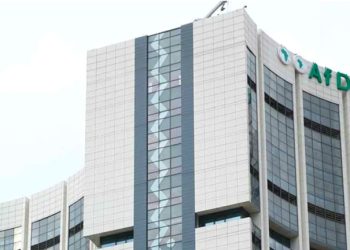
Fitch Ratings has downgraded Namibia’s Long-Term Foreign-Currency Issuer Default Rating (IDR) to ‘BB-‘ from ‘BB’. The Outlook is Stable.
According to the global ratings agency, Namibia’s modest growth prospects and a rigid expenditure profile will maintain high fiscal deficits relative to ‘BB’ peers.Â
“Fitch estimates the general government (GG) fiscal deficit widened to 9.5% of GDP in the fiscal year ending March 2022 (FY21/22, including 0.7% of GDP off-budget items not included in government numbers), above the estimated ‘BB’ median 5% deficit for 2021, from-8.2% in FY20/21. International financing conditions have tightened, which will lead to further increases in the government’s interest bill (16% of revenues in FY21/22).â€
“Growth in tax revenues and a freeze on the public sector wage bill (55% of revenues in FY21/22) for the fourth consecutive year should support improvement in the GG primary balance in FY22/23, but Fitch expects the overall deficit to remain elevated at 7.6% of GDP, significantly above the current 4.8% 2022 deficit forecast for the ‘BB’ median, and also above the government’s forecast of 5.6%.â€
The ratings agency forecasts that the rigid fiscal structure, rising interest costs and the gradual nature of the economic recovery will maintain government debt on an upward trend reaching 75% of GDP by FY24/25, despite fiscal consolidation efforts.
“Fitch estimates GG debt rose to 68% of GDP at FY21/22, significantly above the estimated 55% of GDP 2021 ‘BB’ median and 13pp above FY19/20, reflecting the pandemic-related recession and fiscal policy response.â€
Fitch predicts Namibia’s economic growth to increase to 2.8% in 2022 and 3.1% in 2023, supported by additional increases in mining production and continued recoveries in secondary and tertiary industries, but warns global growth prospects and energy prices as well as tighter global financing conditions could threaten the recovery.
“The adverse impact from the war in Ukraine on global growth prospects and energy prices as well as tighter global financing conditions represent headwinds for the economy. Moreover, the gradual nature of the recovery, partly explained by structural constraints on growth, will result in real GDP not recovering to the pre-pandemic level until 2024 and contribute to the rising trajectory in GG debt levels.â€
The ratings agency expects the current account deficit (CAD) to widen further to 11.3% of GDP, more than triple the forecast 3% of GDP for the ‘BB median’ in 2022 before narrowing to 6.8% in 2023, citing prolonged high oil prices.
“Namibia exports increased by 1.4% in 2021, with diamonds accounting for 19% of total exports, followed by uranium and fish at 15% each. Despite increased export volumes, Namibia registered a current account deficit (CAD) equivalent to 9.2% of GDP (current account balance of 2.6% in 2020), given a steep rise in the import bill for petroleum fuels and lower transfers from the Southern African Customs Union (SACU), a key source of fiscal and external revenue.â€
Fitch expects average inflation to reach 6.1% in 2022 before easing to 4.6% in 2023.Â
“The rising cost of living could add pressure on the government to support low-income households, raising the risk of fiscal slippage. The increase in interest rates, coupled with the domestic market’s saturation of government debt securities, will likely continue to put upward pressure on borrowing costs.â€
Â











